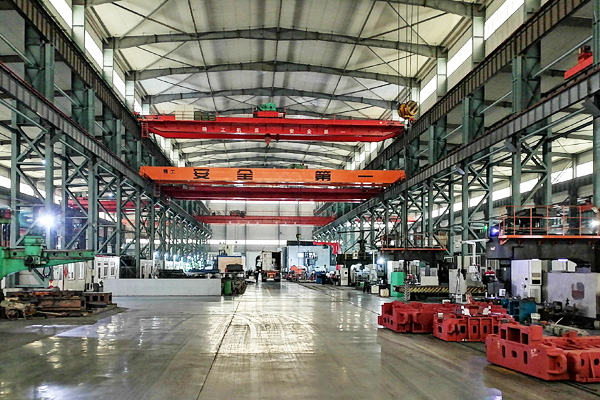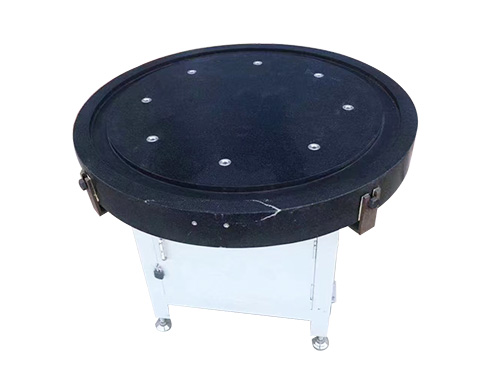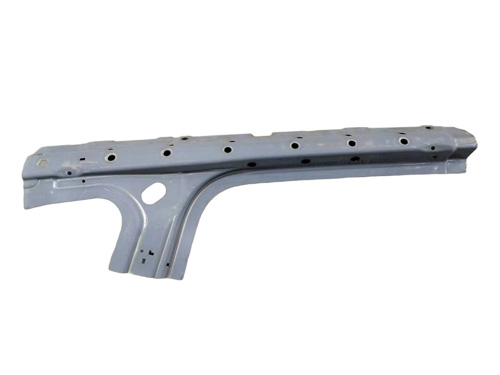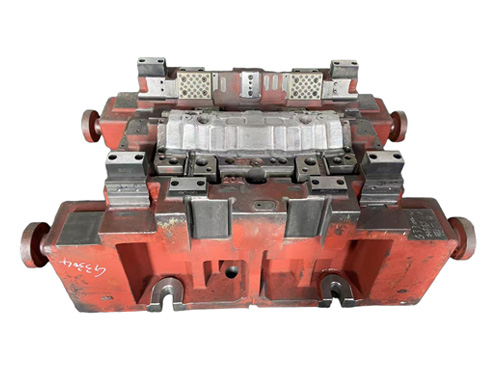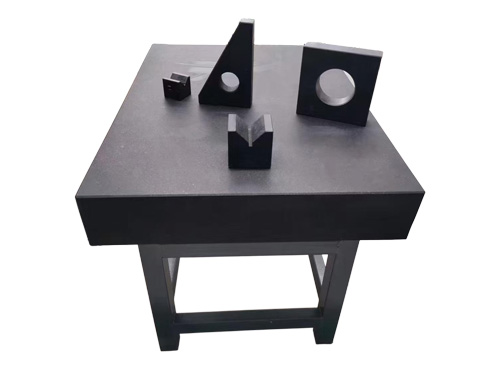News Detail
Secrets of Daily Maintenance for Cast Iron Platforms: Revealing Practical Tips to Extend Service Life
author:hxrtools Time:2025-06-03 14:21:09 Click:123
In the fields of mechanical processing and precision measurement, cast iron platforms are crucial equipment for ensuring production accuracy and efficiency. However, over long-term use, issues such as wear, corrosion, and deformation can gradually affect their performance. Scientific and effective daily maintenance is the key to extending the service life of cast iron platforms and maintaining their high-precision operational state.
I. Introduction: The Importance of Cast Iron Platform Maintenance
1.1 Impact of Equipment Wear on Production
During the process of bearing workpieces and withstanding processing vibrations, the working surface and frame structure of cast iron platforms inevitably experience wear and deformation. If not maintained promptly, the reduced accuracy of the platform can lead to increased measurement errors, substandard workpiece processing, which in turn affects production efficiency and raises production costs.
1.2 Core Value of Effective Maintenance
Regular maintenance of cast iron platforms not only preserves the flatness and accuracy of their working surfaces but also extends the overall service life of the equipment, reducing repair and replacement costs. Good maintenance habits enable cast iron platforms to continuously and reliably support production, ensuring the efficient operation of production processes.
1.3 Focus of This Article: Analysis of Practical Maintenance Tips
This article focuses on the key aspects of daily maintenance of cast iron platforms, providing detailed explanations of practical techniques for cleaning, upkeep, inspection, as well as prevention and handling of common issues, to help users master scientific maintenance strategies.
II. Basic Understanding of Cast Iron Platforms
2.1 Equipment Definition and Functional Overview
Cast iron platforms are planar reference equipment made primarily of cast iron, manufactured through casting and machining. They are mainly used for measuring, marking, and assembling workpieces, providing a stable reference plane for mechanical processing to ensure processing accuracy and quality.
2.2 Core Composition and Characteristics
Cast Iron Material Properties: The graphite structure within cast iron imparts excellent vibration-absorbing properties to the platform, buffering vibrations during processing. Its high hardness and wear resistance enable it to withstand friction and wear during long-term use, but attention must also be paid to rust prevention and impact resistance.
Platform Structural Design: Reasonable rib layout and box-type structures enhance the platform's rigidity and load-bearing capacity. During maintenance, it is necessary to pay attention to the stability of structural connections to avoid deformation caused by uneven stress.
2.3 Mainstream Product Classifications
Classification by Accuracy Grade: Including Grade 0, Grade 1, Grade 2, etc. Different accuracy grades have varying maintenance requirements, with higher-precision platforms requiring more meticulous care to maintain their performance.
Classification by Purpose: Such as measuring platforms, marking platforms, and assembly platforms. Due to different usage scenarios, the maintenance priorities of various platforms also differ.
2.4 Key Technical Parameters and Their Relevance to Maintenance
Flatness: During maintenance, it is necessary to regularly inspect the flatness to prevent precision degradation caused by wear and deformation, which could affect measurement and processing accuracy.
Load-bearing Capacity: Use the platform strictly within its specified load-bearing capacity to avoid overloading and structural damage. Simultaneously, inspect the load-bearing structure for any damage during maintenance.
Hardness: Pay attention to changes in the hardness of the platform's working surface to avoid reductions in hardness due to impacts or excessive wear, which could affect the platform's service life.
III. Practical Maintenance Tips to Extend Service Life
3.1 Daily Cleaning and Upkeep
Cleaning Frequency and Methods: After each use, promptly clean the platform surface of iron filings, oil stains, dust, and other debris. Use a brush or vacuum cleaner to remove debris, then wipe the surface with a clean soft cloth and a neutral cleaner, avoiding the use of sharp tools that could scratch the working surface.
Cleaning of Key Areas: Focus on cleaning T-slots, bolt holes, and other areas prone to debris accumulation to prevent impurities from affecting workpiece fixation and platform precision.
3.2 Rust Prevention
Rust Prevention Cycle: Depending on the usage environment and frequency, conduct rust prevention treatment on the platform every 1-3 months. In humid environments or with high-frequency use, shorten the rust prevention cycle.
Treatment Methods: Apply rust-preventive oil or paint evenly to the platform surface, frame, and bolts and other rust-prone areas to form a protective film, preventing rust and corrosion of the cast iron.
3.3 Regular Inspection and Tightening
Inspection Items: Regularly inspect the platform frame welds for cracks or weld separation, check for loose bolts, and examine the working surface for wear or dents. The inspection frequency can be set according to usage conditions, generally at least once a month.
Tightening Operations: For loose bolts, use a wrench to tighten them to the specified torque. If welding issues are found, promptly seek professional repair to ensure the platform's structural stability.
3.4 Precision Calibration and Repair
Calibration Frequency: High-precision cast iron platforms should undergo precision calibration every 3-6 months; ordinary platforms can be calibrated every 6-12 months according to usage requirements.
Repair Methods: For minor wear or precision deviations, repair can be carried out through grinding or scraping. If the wear is severe or the deformation is significant, contact a professional manufacturer for handling. Do not attempt to repair it arbitrarily.
3.5 Proper Usage and Storage
Usage Specifications: Use the platform strictly within its specified load-bearing capacity, avoiding concentrated force or overloading. Prohibit operations such as hammering or cutting on the platform that could damage the working surface.
Storage Requirements: When not in use for an extended period, wipe the platform clean, perform rust prevention treatment, and store it in a dry, ventilated environment free from corrosive gases, avoiding direct sunlight and humidity.
IV. Maintenance Precautions and Handling of Common Issues
4.1 Maintenance Precautions
Avoid Corrosive Cleaners: Prevent cleaners from causing corrosion to the platform surface and structure, which could affect platform performance and service life.
Avoid Excessive Force: During cleaning, inspection, and maintenance, avoid using excessive force to prevent damage to the platform's working surface or structural components.
Wear Protective Equipment: When operating, wear protective gear such as gloves and goggles to ensure personal safety and prevent hand oil from contaminating the platform.
4.2 Handling of Common Issues
Working Surface Wear: If minor wear is found on the working surface, use professional grinding tools for repair. For severe wear, contact a professional for grinding or scraping treatment.
Frame Deformation: For minor deformation, adjust the pad iron or perform calibration. For severe deformation, replace the damaged parts to ensure the platform's safety and stability.
Rust and Corrosion: For locally rusted areas, first sand the rust, then apply rust prevention treatment. For extensive rust, re-surface treatment is required.
V. Industry Trends and Upgrading of Maintenance Concepts
5.1 Intelligent Maintenance Management
In the future, cast iron platforms may be equipped with smart sensors to monitor real-time data on platform deformation, wear, and load-bearing status. Through IoT technology, remote monitoring and early warning can be achieved, making maintenance work more intelligent and precise.
5.2 Green and Environmentally Friendly Maintenance Materials
With the increasing environmental requirements, environmentally friendly cleaners, rust preventives, and other maintenance materials will be more widely used. These materials not only effectively protect the platform but also reduce environmental pollution, aligning with sustainable development concepts.
5.3 Popularization of Preventive Maintenance
Shift from reactive repairs to proactive prevention. By establishing comprehensive maintenance archives, analyzing platform usage and maintenance data, predicting potential issues in advance, and formulating preventive maintenance plans, the risk of equipment failure can be reduced, and production efficiency can be improved.
VI. Conclusion: Scientific Maintenance, Continuously Empowering Production
Daily maintenance of cast iron platforms is crucial for ensuring their stable performance and extending their service life. By mastering these practical maintenance tips and performing tasks such as cleaning, rust prevention, and inspection, equipment failures can be effectively reduced, and production costs can be lowered. In the current era of rapid manufacturing development, scientific maintenance of cast iron platforms will continuously empower production.
 HOT PRODUCTS
HOT PRODUCTS
 CONTACT US
CONTACT US
—— E-mail:project@haoranmj.com
—— Whatsapp:+86 18932785670
—— Tel:+86 18932785670
—— Add:Across from Sanjing Distillery on Road 4, Botou Economic Development Zone, Cangzhou City, Hebei Province









